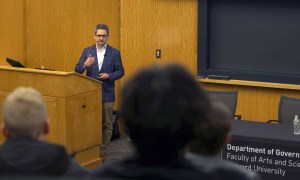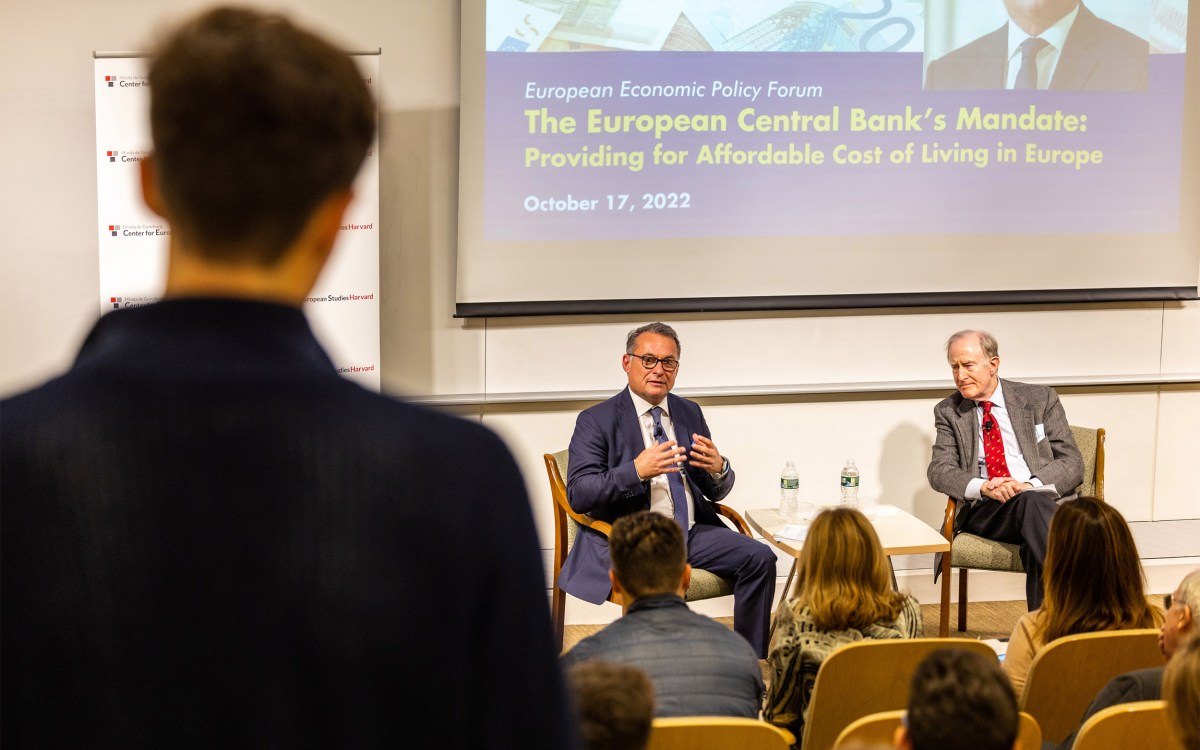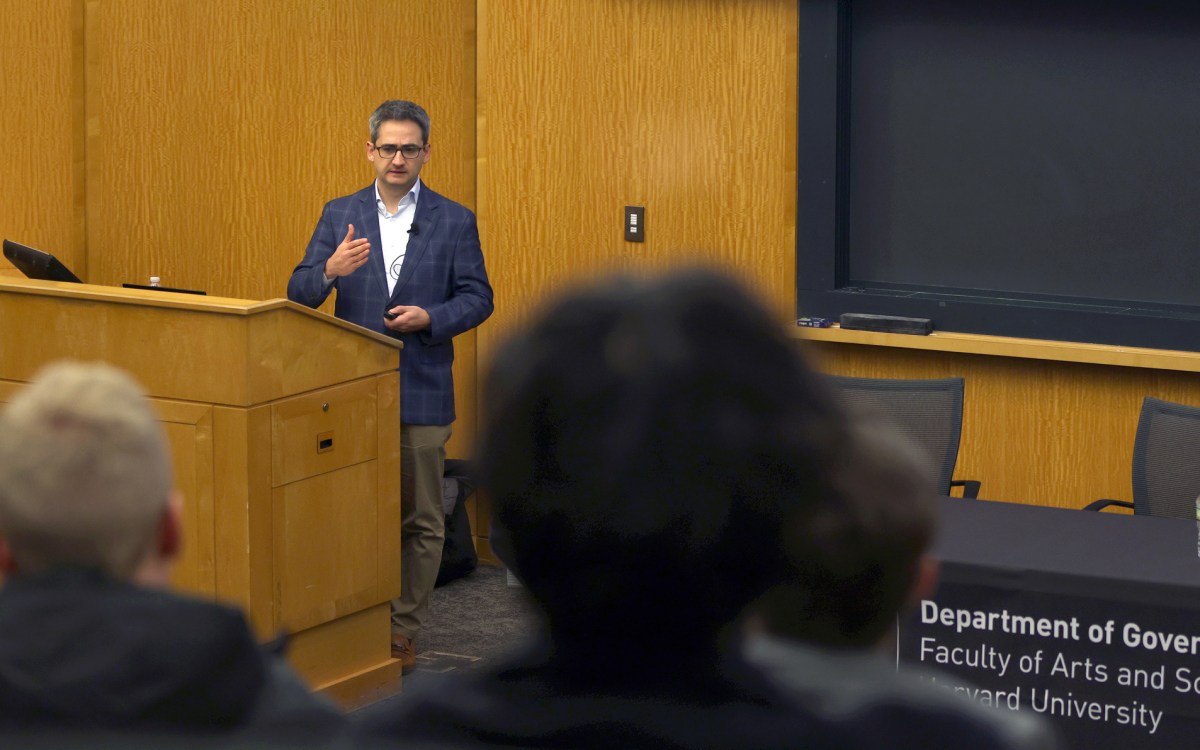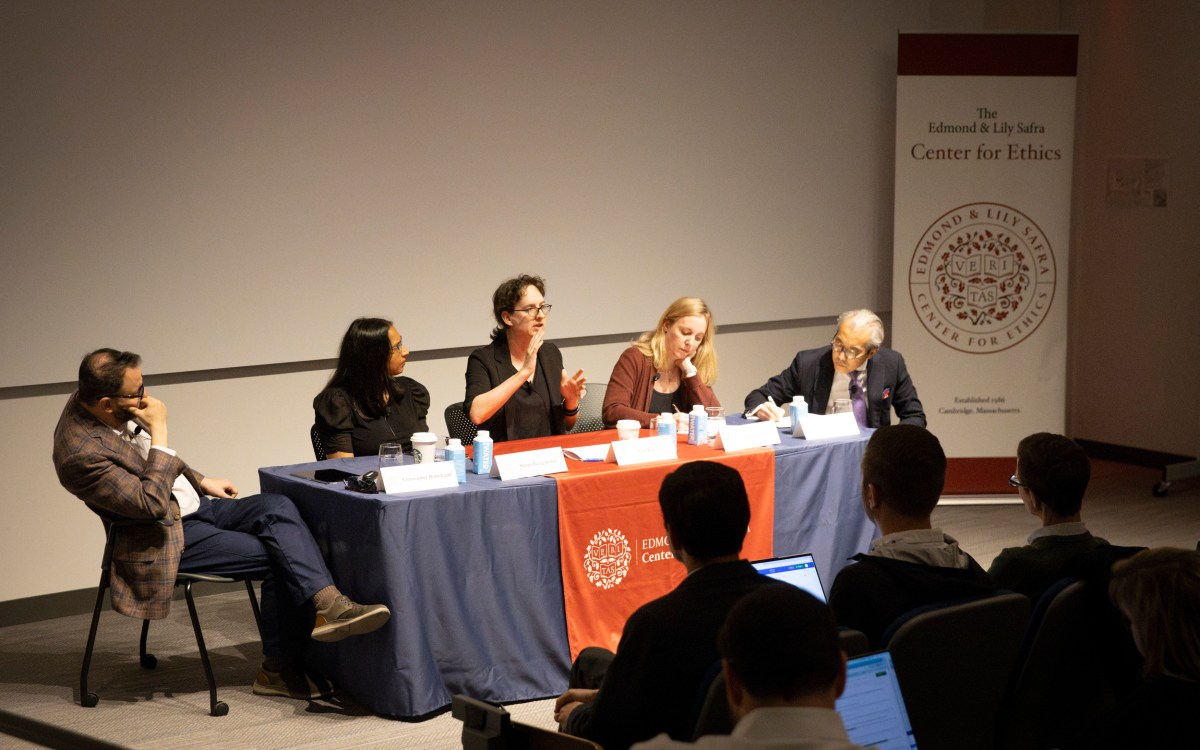
Economist Jason Furman talks about latest inflation news, outlook for 2023.
Harvard file photo
New inflation report offers hope, but expert says we’re not out of woods yet
Jason Furman expects Fed to raise rates, sees something of mixed picture for economy
For a second month inflation slowed more than expected, according to new report from the U.S. Department of Labor. The 0.1 percent increase in the Consumer Price Index for November brought huzzahs from Wall Street on hopes the nation may be seeing the beginning of the end of months of punishing price increases. But the question remains: How close are we to being out of the woods?
Jason Furman, Aetna Professor of the Practice of Economic Policy at Harvard Kennedy School and the Faculty of Arts and Sciences, spoke with the Gazette about where the U.S. economy stands now and what the trends suggest for 2023. The interview has been edited for clarity and length.
Q&A
Jason Furman
GAZETTE: Is inflation officially on a downward trend?
FURMAN: This is two good months in a row. We had that last summer and that proved to be a false dawn. But I think the signs are better now than they were a year ago. In particular a lot of commodity prices are falling; supply chains are healing; and some favorable things for inflation, like a slowdown in the growth of rents, have only just started. The problem is inflation has been incredibly high, so even if it comes down, it may still be too high. The most likely scenario is that inflation comes down. A much bigger question is whether it comes down far enough for the Fed.
GAZETTE: Do you think these numbers are good enough to nudge the Fed off its current path of interest rate hikes when the committee meets this week?
FURMAN: This guarantees they’ll raise by 50 basis points. They should raise by 50 basis points. They basically already said they did that. Different data tells different stories: This is very positive, but it’s still only two months of data. And there were some things this month that were like transitory good news. Just like last year, some of the news was transitory bad news. For example, used car prices fell a lot in November; they’re probably not going to keep falling a lot every month. So, they are going to raise rates; they should raise rates. The question is: What do they do next? Their next meeting is Feb. 1. They’ll have a lot more data between now and then. Right now, what they do is going to depend enormously on the data. This might be their last interest rate increase or maybe there’ll be many more to come and that just depends on whether this continues.
GAZETTE: We’ve had two consecutive months with below-expected inflation numbers, but we still have 7 percent inflation. Why are the markets so happy?
FURMAN: Seven percent is over the last 12 months, so there’s nothing you can do about what happened in July and August and September. That’s history. If you want to extrapolate forward and think what inflation is going to be, looking at the last month or two or three is a better way to think about what’s going to happen going forward. And that’s been much lower than 7 percent. The market is correctly focusing on what’s happened in the last two months, not the last 12 months. And the market is still pricing in further rate hikes even after Wednesday. So, I don’t think the market thinks the job is done. I think they think it’ll be a little bit easier than they thought yesterday.
GAZETTE: One of the intended byproducts of the Fed’s multiple interest rate hikes this year was to tamp down the job market. Some industries, like tech and media, are laying off significant numbers. But overall, the Labor Department says the U.S. is still adding jobs at a robust clip. What’s happening with the labor market?
FURMAN: The labor market has loosened a little bit, but it’s mostly loosened because the number of job openings has fallen. We went into this with just an enormous number of unfilled jobs. And what’s happened is as demand has been cut back, it’s reduced the number of unfilled jobs, but there’s still enough of them for anyone that wants one. I’m not positive whether that’s going to be enough for the next year. At some point, it may be that to get inflation all the way back to target it’s impossible without the unemployment rate going up. But so far, it’s happened with job openings coming down.
GAZETTE: According to the Labor Department, rents rose 0.8 percent in November and were 7.9 percent higher than this time last year, the fastest year-over-year growth in 40 years. The Fed’s interest rate policy has cooled home sales, as planned. How does the housing sector look?
FURMAN: The reduction in homebuilding subtracted more from GDP in the third quarter than any quarter since the financial crisis, so you particularly see monetary policy in the housing sector. I think it’s also affected the overall state of demand, which has reduced job openings, and it’s kept inflation expectations down so that it’s reduced the chances of a self-fulfilling wage/price spiral.
Their numbers are interesting. Their numbers are imputing rents for everyone. If you look just at the new leases, those are growing much more slowly. If you sign a new lease this month, your lease probably isn’t any higher than it would have been a month ago. But if you look at all leases, they were sort of on an upward path. The other thing is the way the Bureau of Labor Statistics reports the numbers. They smooth them over six months, so if an increase happened six months ago, that’ll show in the numbers today. It’s widely believed that rents are not increasing over the last few months.
GAZETTE: Gas and oil prices were squeezing consumers for much of 2021 and the first half of 2022. That has leveled off. What accounts for this reversal and what is the outlook for 2023?
FURMAN: It’s amazing. We began the year thinking the Russian invasion of Ukraine was going to have this huge effect on commodity prices. It did on the price of natural gas in Europe, and they’re really deeply suffering. In the United States, gas prices are basically what they were before the invasion. Energy inflation this year has been like any other part of inflation. Part of that is a global slowdown in energy demand. As economies around the world have weakened, they’re buying less oil. China was a big part of that story with their COVID lockdowns. They reduced a lot the amount of oil they were buying. And, at the same time, unfortunately, Russia has continued to sell into the global market. Now it sells at a steeply discounted price, so it’s not getting as much as it would have without the sanctions, but it’s still reaching the market. Futures prices right now predict even larger falls in the price of oil next year, but obviously, this is a volatile commodity so anything could happen.
GAZETTE: So, what does all of this tell us about what might be on deck for the economy in 2023?
FURMAN: Today’s inflation data was good news. But it’s still going to be a daunting challenge to get inflation down as far as it needs to go. That’s especially true when two weeks ago, we learned that wages continue to grow very quickly. When that happens, prices also tend to grow quickly. So, we are very, very far from being able to declare victory on the soft landing. But after the latest inflation data we can have a little bit more hope. The main area to be worried about with inflation is in services, outside of housing. So, everything from restaurants to health care to financial services, etc. The prices are basically to cover the wages of the people in those sectors, and those wages are growing very high.







